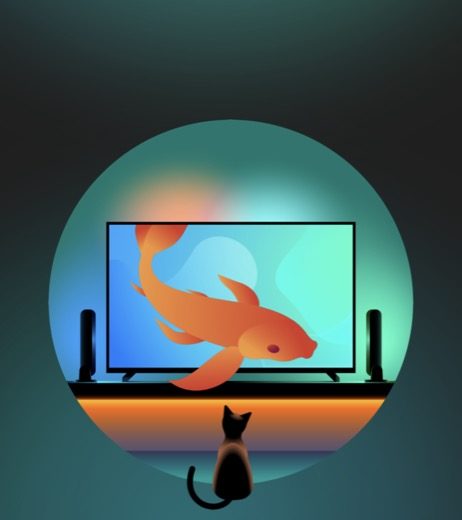

The other app is called ‘Hue Sync’ which acts as the main interface for controlling the Sync Box as well as the brightness and intensity of the lights assigned to it. The main Hue app is used to create an ‘entertainment’ area for assigning the Gradient Lightstrip and any other lights you plan to use with the HDMI Sync Box. You will need to use two apps to complete the setup process.
#Hue sync setup tv
Doing it this way kept issues to a minimum but, again, your mileage will vary depending on the AVR, TV and HDMI source devices. I encountered my fair share of HDMI ‘handshake’ glitches during the review period.Īlternatively, you could connect all your HDMI devices to the Sync Box and then connect the box to the TV’s spare HDMI input while keeping the TV’s ARC port connected to the AVR. Just be aware that ARC can be unreliable and adding another device between the AVR and TV chain means potentially more issues.
#Hue sync setup plus
You’ll also need to remember to ‘enable ARC bypass’ within the Philips Hue Sync app.Ĭonnecting it this way means you can use your AVR’s remote to switch inputs as usual, which is a big plus since the Sync Box doesn’t come with a remote. Things get a little more complicated if you’re using an AV receiver (AVR) in your setup. With your video inputs connected to the receiver rather than your TV, you could connect the receiver’s HDMI video-out cable to one of the Hue Play’s inputs. The HDMI Sync Box works with any connected streaming device or games console Setup It does, however, support voice commands via Google Assistant, Siri and Amazon Alexa. This means that you will need to resort to using the Philips Hue Sync app for changing inputs and adjusting the brightness of the lights. While the Sync Box boasts automatic HDMI switching, it isn’t particularly reliable. There is an option to program key functions to a regular IR remote such as the one that comes with your television but I couldn’t get this working. Sadly, the HDMI Sync Box doesn’t include a physical remote. The Sync Box’s power brick smartly comes with two extra power outputs so you connect the Gradient Light Strip and another Hue light without taking up additional power points. I was able to easily pair this up with the HDMI Sync Box to complete the look. I already had a regular Hue Colour Lightstrip plastered behind an entertainment unit located directly below the wall-mounted TV. Installation is a breeze with the included plastic brackets that stick onto the back of your TV, enabling the Gradient Lightstrip to be piped along the top and sides.ĭisappointingly, the Gradient Lightstrip won’t cover the bottom side of the TV so you’ll want to augment it with another Hue light to avoid having a large dark void below the TV. The Gradient Lightstrip is much thicker than a regular Hue Colour Lightstrip outputting a whopping 1100 lumens.

I tested out the 55-inch Hue Play Gradient Lightstrip which also comes in 65 and 75-inch variants to match the size of your television. You won’t find any lights included in the box and at the bare minimum you will need either a ‘Hue Play Gradient Light strip’ or a pair of ‘Hue Play Light Bars’. You’ll want to make sure you have an unobstructed flat white wall behind the television for it to work effectively, so it’s not an ideal option for televisions located in a corner position, for example.
#Hue sync setup full
The HDMI Sync Box essentially maps portions of the image on screen to different lights, so you need a spread of lights around the rear of the screen, as well as ideally elsewhere in your home theatre to get the full surround lighting effect. The Sync Box does an impressive job of matching Hue lights with the action onscreen that never fails to pull you in


 0 kommentar(er)
0 kommentar(er)
